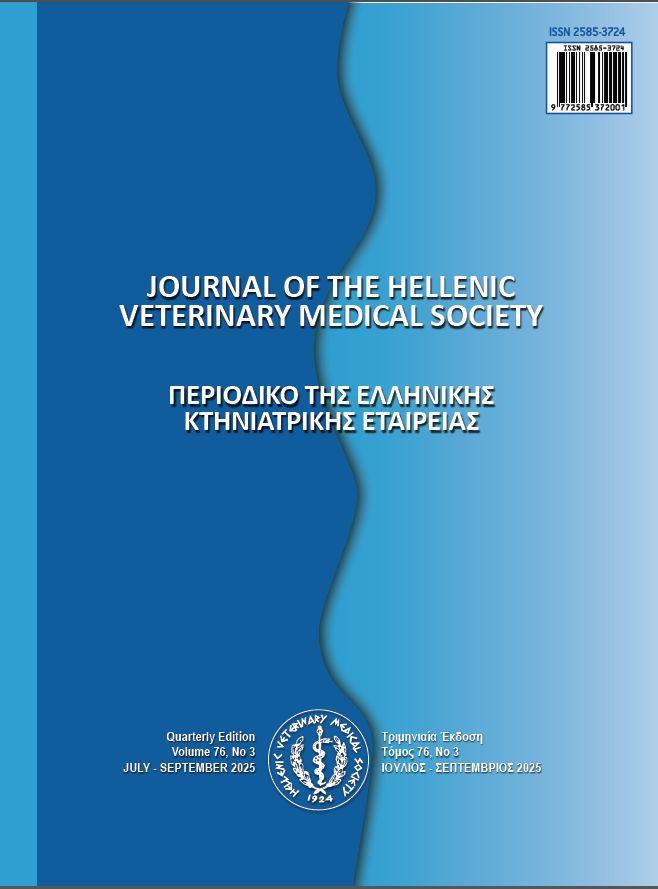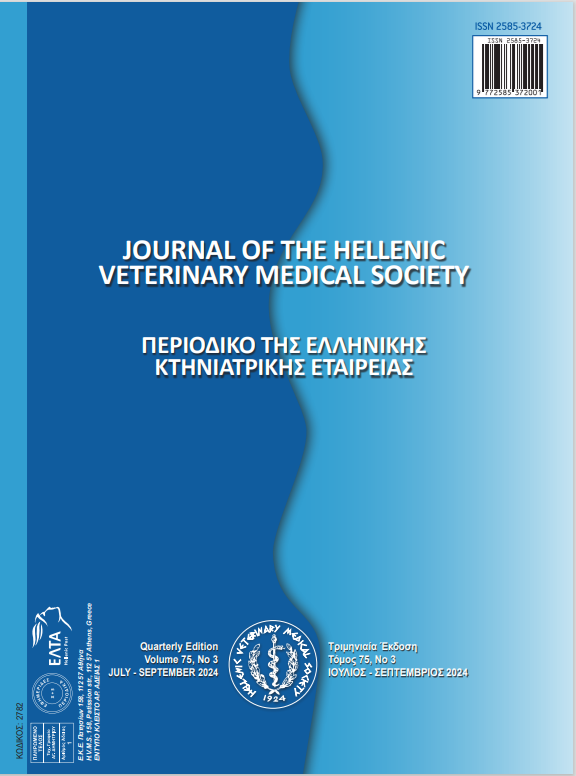The Effects of Solid State Fermentation on Nutrient Composition of Olive Cake with Aspergillus Niger and Bacillus Subtilis
Περίληψη
Olive cake is a cost-effective feed ingredient with potential in animal nutrition; however, its application is limited due to low protein content, high fiber levels, and anti-nutritional factors. This study aimed to enhance the nutritional value of olive cake through solid-state fermentation using Aspergillus niger and Bacillus subtilis.
Aspergillus niger and Bacillus subtilis were applied to the olive cake, and samples were incubated at 30°C for 24, 48, and 72 hours. Samples were divided into control and treatment groups, each containing 200 g of olive cake mixed with 100 ml of distilled water.
The results showed that solid-state fermentation generally increased crude protein content and decreased crude fiber content (P<0.05). A significant increase in crude protein content was observed only with Bacillus subtilis, while a significant decrease in crude fiber content was noted only with Aspergillus niger (P<0.05). Neutral detergent fiber content remained unchanged across all groups (P>0.05). Although acid detergent fiber and acid detergent lignin contents generally decreased in all fermented groups, this reduction was statistically significant only in the groups treated with Aspergillus niger (P<0.05). Moreover, a significant decrease in nitrogen-free extract, metabolizable energy, sugar, total phenolic content, total flavonoid content, and antioxidant activity was observed in all fermented olive cake groups (P<0.05).
The findings suggest that olive cake, an inexpensive and underutilized by-product, can be effectively transformed into a valuable feed ingredient and/or feed additive for animal nutrition through solid-state fermentation.
Λεπτομέρειες άρθρου
- Πώς να δημιουργήσετε Αναφορές
-
Ataei, A., & Kirkpinar, F. (2025). The Effects of Solid State Fermentation on Nutrient Composition of Olive Cake with Aspergillus Niger and Bacillus Subtilis. Περιοδικό της Ελληνικής Κτηνιατρικής Εταιρείας, 76(3), 9797–9806. https://doi.org/10.12681/jhvms.40350
- Τεύχος
- Τόμ. 76 Αρ. 3 (2025)
- Ενότητα
- Research Articles

Αυτή η εργασία είναι αδειοδοτημένη υπό το CC Αναφορά Δημιουργού – Μη Εμπορική Χρήση 4.0.
Οι συγγραφείς των άρθρων που δημοσιεύονται στο περιοδικό διατηρούν τα δικαιώματα πνευματικής ιδιοκτησίας επί των άρθρων τους, δίνοντας στο περιοδικό το δικαίωμα της πρώτης δημοσίευσης.
Άρθρα που δημοσιεύονται στο περιοδικό διατίθενται με άδεια Creative Commons 4.0 Non Commercial και σύμφωνα με την άδεια μπορούν να χρησιμοποιούνται ελεύθερα, με αναφορά στο/στη συγγραφέα και στην πρώτη δημοσίευση για μη κερδοσκοπικούς σκοπούς.
Οι συγγραφείς μπορούν να καταθέσουν το άρθρο σε ιδρυματικό ή άλλο αποθετήριο ή/και να το δημοσιεύσουν σε άλλη έκδοση, με υποχρεωτική την αναφορά πρώτης δημοσίευσης στο J Hellenic Vet Med Soc
Οι συγγραφείς ενθαρρύνονται να καταθέσουν σε αποθετήριο ή να δημοσιεύσουν την εργασία τους στο διαδίκτυο πριν ή κατά τη διαδικασία υποβολής και αξιολόγησής της.




